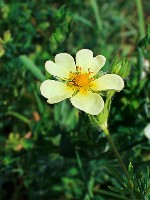Mon-Fri 9am - 5pm Mountain time
Black Elderberry vs Pennsylvania Cinquefoil
Sambucus canadensis
Potentilla Pensylvanica
NOT AVAILABLE THIS SEASON
Black Elderberry is a deciduous shrub native to eastern North America. You can plant this shrub in moist areas and it will help stabilize your soil. You can also use it on rural properties anywhere you'd use a lilac.
Black Elderberries are considered to be partially self-pollinating. So while they will still produce some berries without cross-pollination, planting with another variety will increase yields. Consider planting with Ranch Elderberry or Bob Gordon Elderberry.
Warning: the seeds, stems, leaves, roots, and uncooked berries of the Black Elderberry are poisonous to humans when eaten in quantity. You should cook the berries to make them safe for human consumption.
Pennsylvania Cinquefoil is well suited for naturalisation projects as it is a wildflower native to North America. It is widespread and can be found growing in rocky soils at higher elevations in the mountains and foothills, as well as the dry prairies. The Pennsylvania Cinquefoil is capable of growing in cold, harsh conditions. The bright yellow flowers are found at the top of long stalks in small dense clusters and are ideal for attracting pollinators.
Black Elderberry Quick Facts
Pennsylvania Cinquefoil Quick Facts
Toxicity: leaves, stems, and uncooked berries are poisonous to humans

